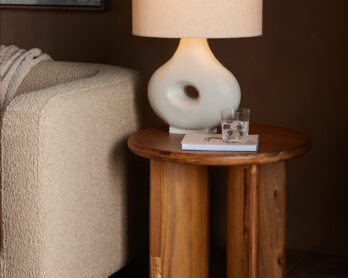Furniture in Context – Le Corbusier and Modernism

You’ve seen his gorgeous chairs countless times. And as visually arresting as they are – stern yet comfortable – they do not easily offer up their complex story. Le Corbusier was born Charles-Édouard Jeanneret, and by the end of his life he changed more than just his name. He was able to permanently alter entrenched ideas on architecture, city-planning, and furniture. Every one of his designs encapsulate the totality of his concepts – a unified way of perceiving the world that yearned to usher in an efficient and controlled future.
Ideology of a Master
Yet, despite the acknowledgement of his importance, Swiss-French architect Le Corbusier remains controversial for his style of ideologically-driven architecture. Perhaps it was that the designer was prone to espousing his ideas in print as often as enacting them, reflecting an era out of step with our more pragmatic present. Le Corbusier is well-remembered for contributing a practice and theory of reinforced concrete pylons and load-bearing outer walls that paved the way for more open interiors. His architectural ideals, however, spun over to his writings on urban planning and society. He favored a mathematical ideal in organizing modern life: rigid, machine-oriented organization was his aim, tempered only by a rigorous, somewhat severe application of classical geometry.
Furniture for the Future from the Past
However you feel about his larger ideas about society, Le Corbusier’s furniture is a much more reasonable application of his thinking. Typical for Le Corbusier, he began his foray into furniture by authoring a book. In this not-so-slim volume, he detailed the differences between inscrutable categories, such as human-limb objects and type-furniture, in the service of attacking hand-made furniture practices. His eventual foray into production, however, resulted in furnishings, made in collaboration with his cousin Pierre Jeanneret and architect Charlotte Perriand, that remain well loved. They are striking examples of the clean, efficient lines of modernism. They pair well with both Bauhaus designs as well as mid-century modern pieces.
“Choice, subtlety, proportion, and harmony.”
It is easy to see why. Le Corbusier’s reliance on the golden ratio and other numerical sequences to create proportion is perfect for furniture. This practice even anticipates in some ways the push for ergonomic design. Le Corbusier’s austerity is softened in his designs for furniture through the application of fine leathers or exotic cowhides. His use of tube steel with chrome finishes is forward-thinking; he championed mass-produced furniture, which is now an acknowledged sustained victory of modernism and its practitioners.
Adapting to Contemporary Practice
Le Corbusier focused on chairs, labeling sofas as “bourgeois.” However, his club chair, or LC3, has been adapted to loveseat size as well as comfortable couch, giving contemporary decorators greater options. Likewise, Le Corbusier’s unmistakable chaise design can easily be found in the original cowhide as well as several other upholstery options. Le Corbusier also contributed a few notable designs for tables. Like all his work, they are clean, straight-lined examples of efficient modernism in practice.








